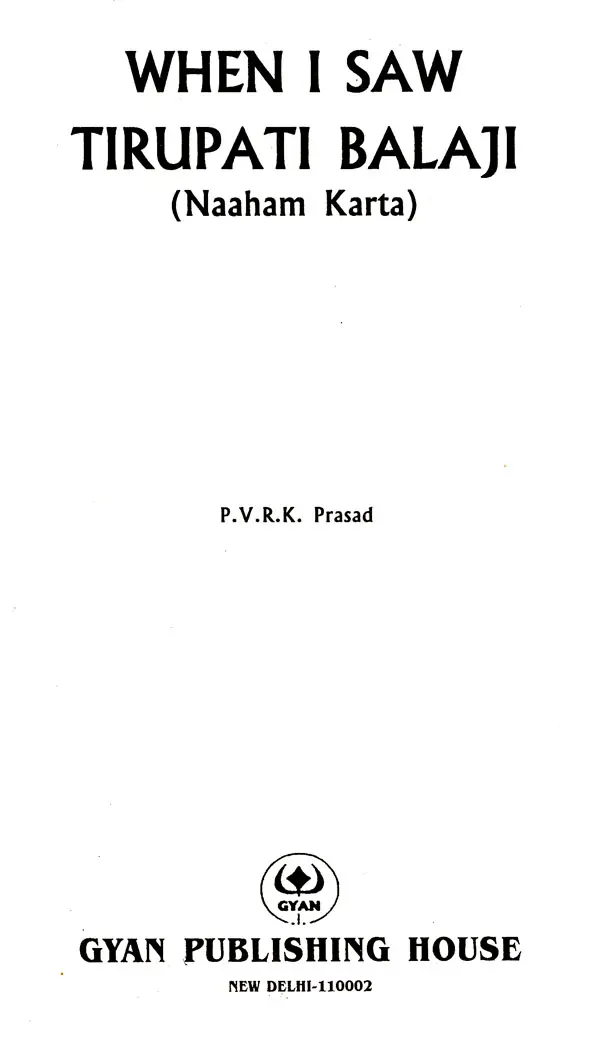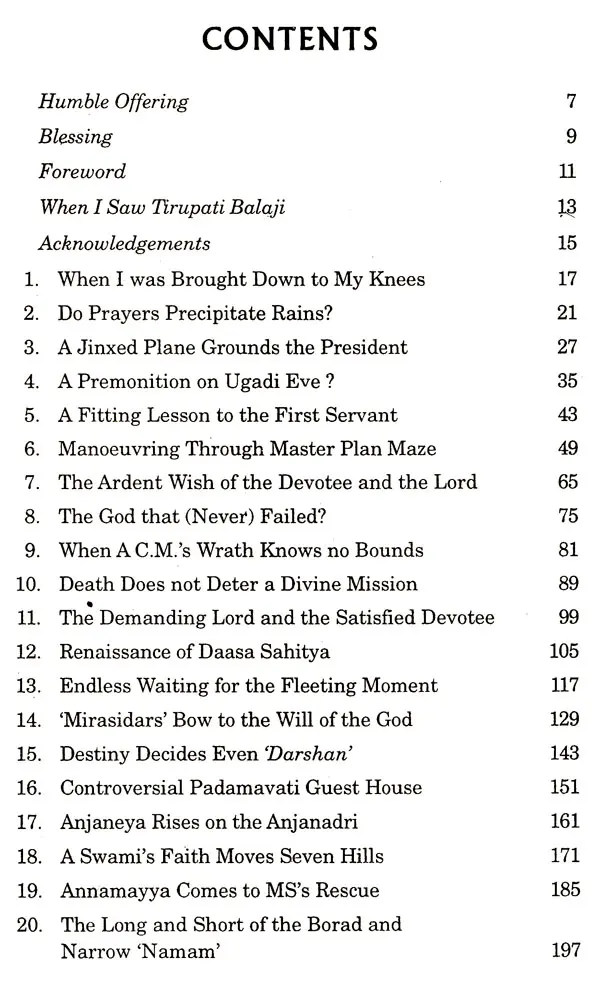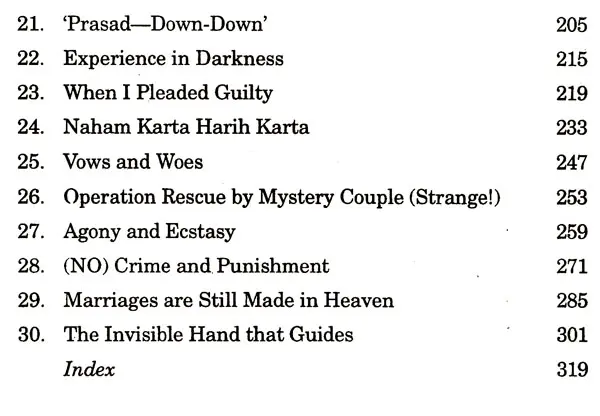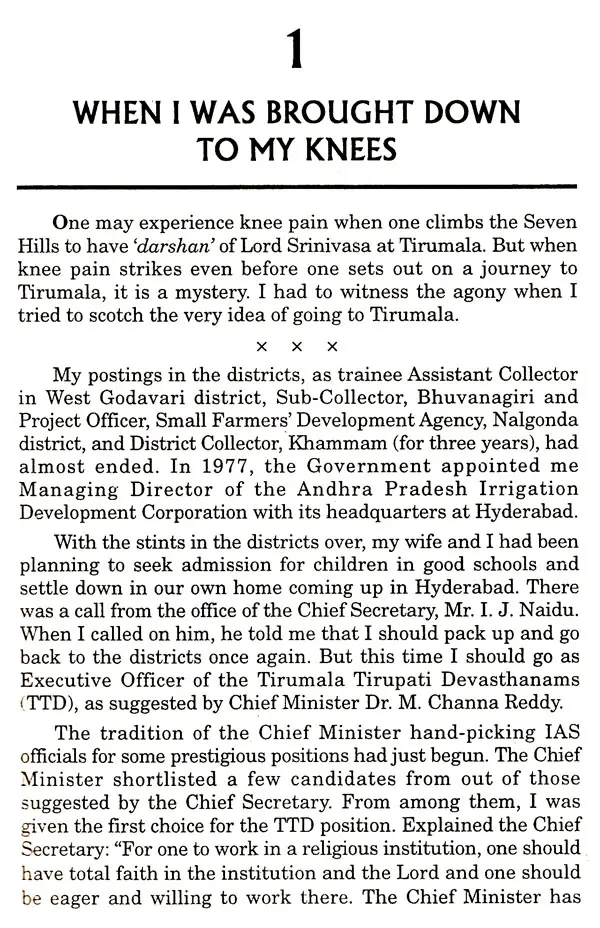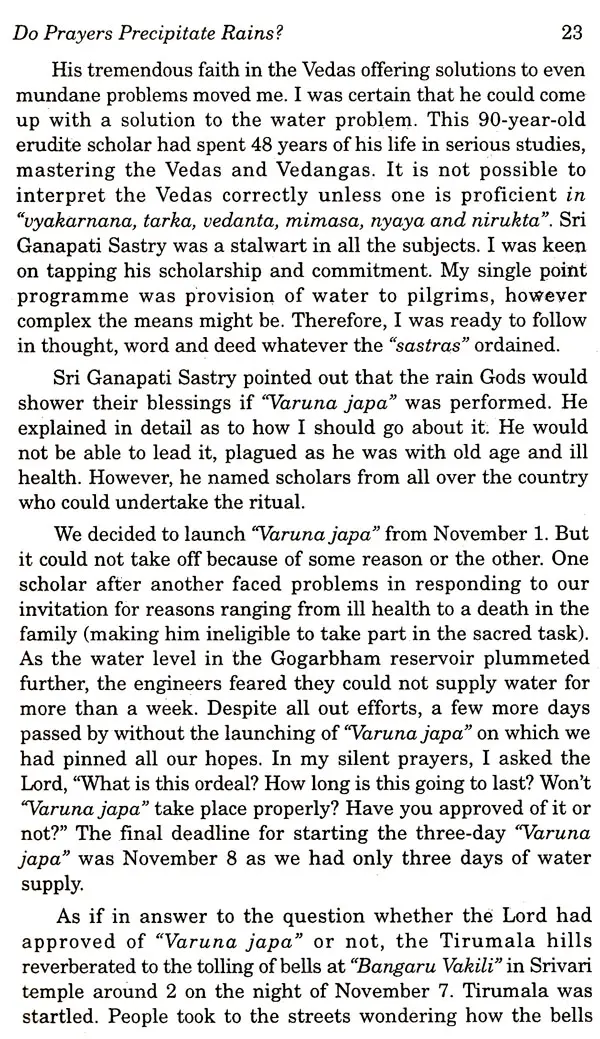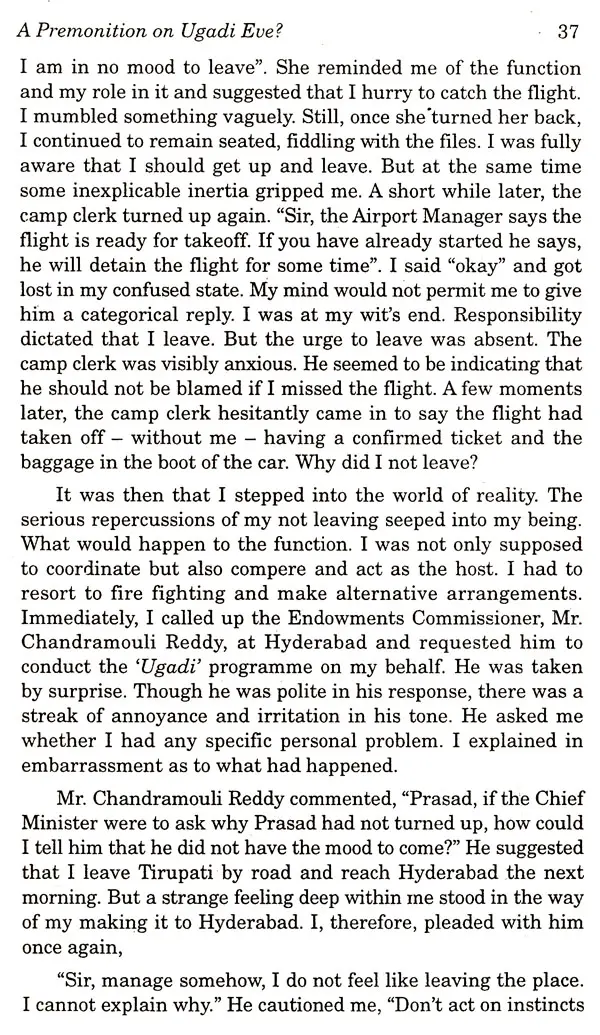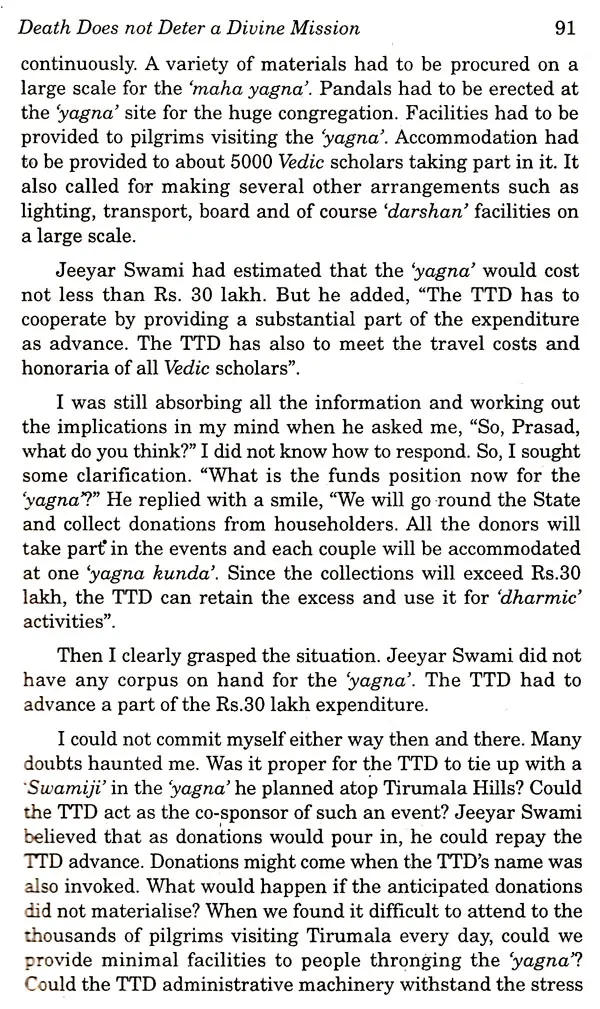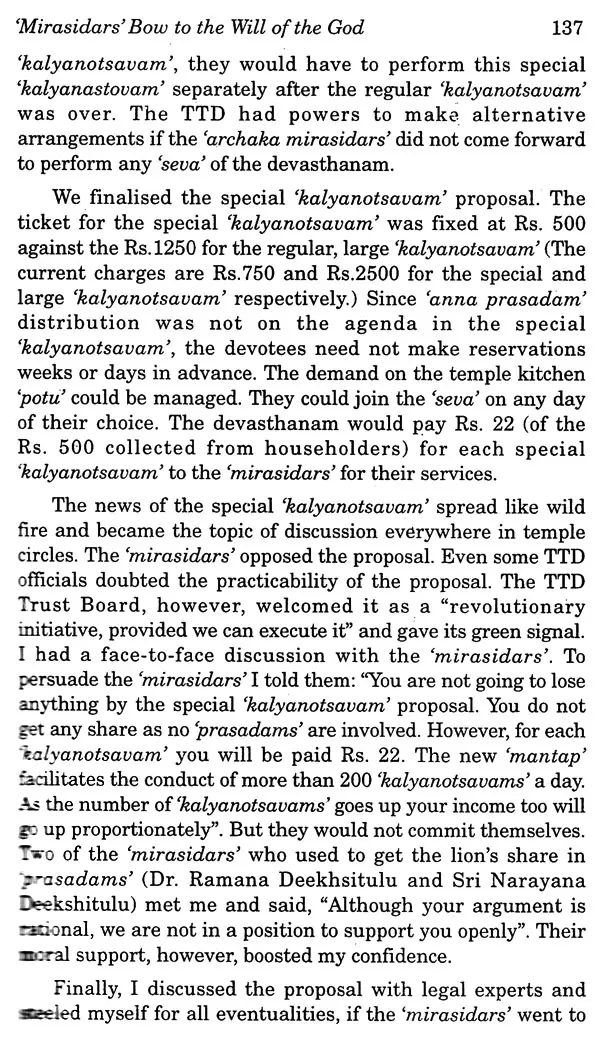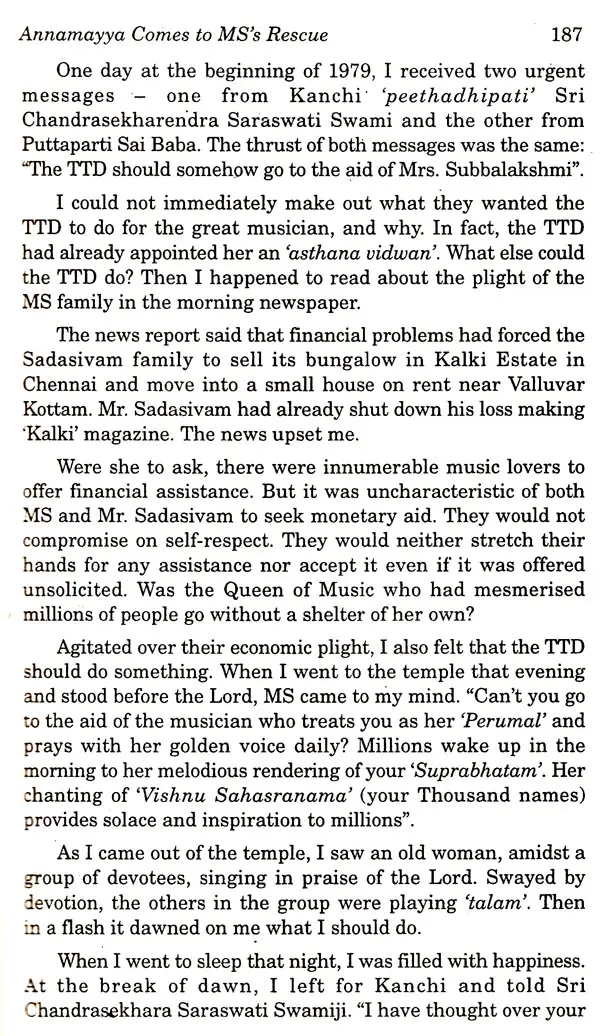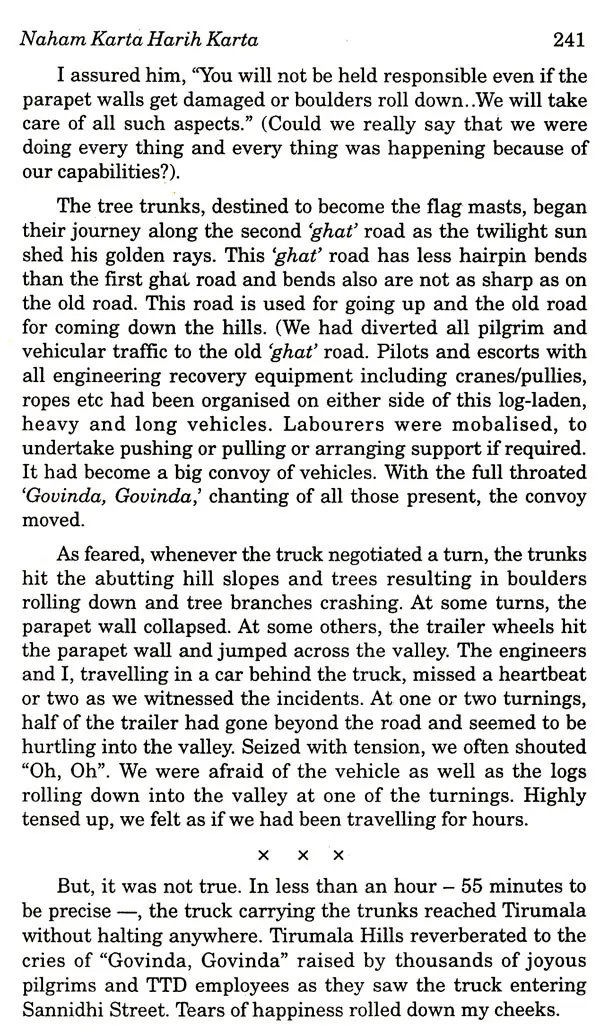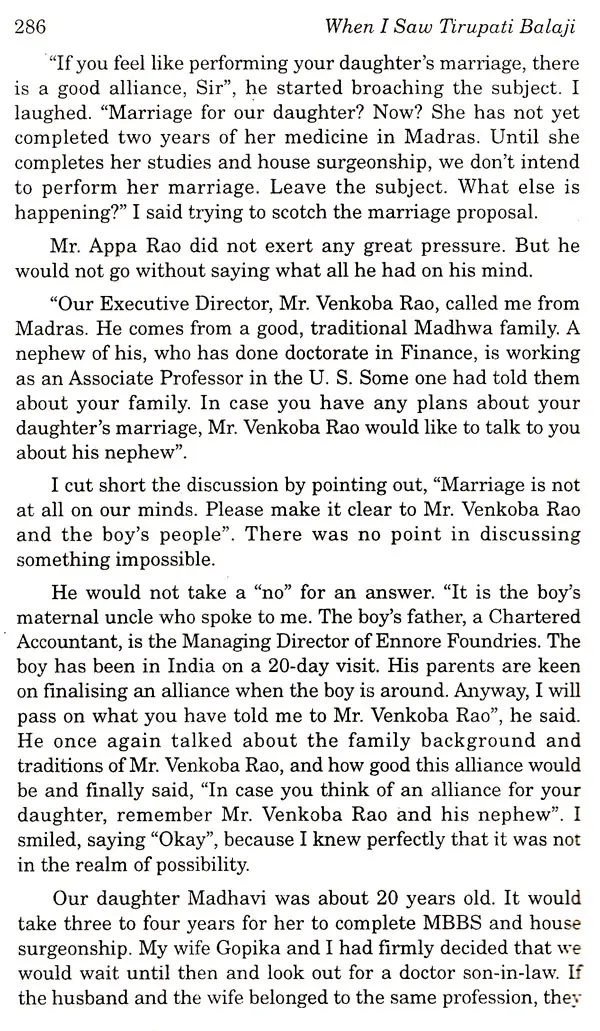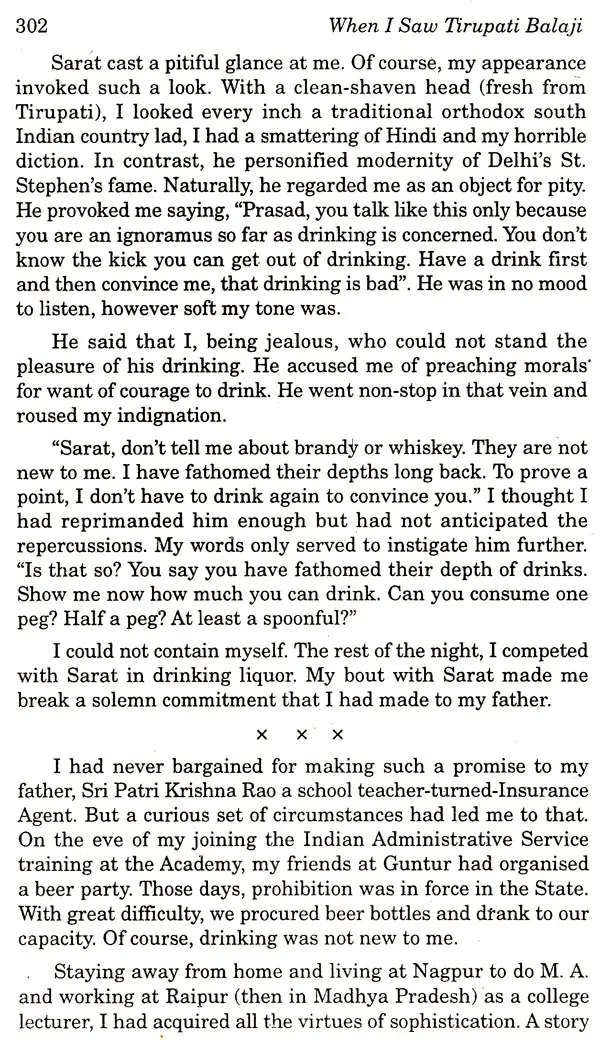
When I Saw Tirupati Balaji (Naaham Karta)
Book Specification
| Item Code: | UAN733 |
| Author: | P. V. R. K. Prasad |
| Publisher: | Gyan Publishing House, New Delhi |
| Language: | English |
| Edition: | 2014 |
| ISBN: | 9788121212007 |
| Pages: | 333 |
| Cover: | PAPERBACK |
| Other Details | 8.50 X 5.50 inch |
| Weight | 420 gm |
Book Description
Regardless of what did in the interests of devotees or TTD, believe that all my actions stemmed from my innate belief: "Naham Karta, Hanh Karta" (I am not the doer. Srihan is). I treated both commendations and condemnations as 'prasadam' from Lord Srinivasa.
I merely recorded the events as they took place, without imposing my views on readers. My experiences some wonderful, some strange and some incredible trigger conflicting emotions in atheists and theists.
I don't know how my experiences impacted rationalists who question, "Is there God? If there is, how does He look? Have you seen Him?", or the seekers of truth who ask, "How much of faith one should repose in God to earn His support for human endeavors ?"
This book, perhaps, has answers for such questions.
My own belief in 'Naham Kartha, Harih Kartha' has only grown stronger over the years.
Starting his career as a lecturer in Ravi Sankar University in 1962, he joined the Indian Administrative Service in 1966 Allotted to Andhra Pradesh cadre, he has held several positions in both the State and Central Goverments. He served as Sub-Collector, Bhongir Collector, Khammam, and Managing Director, State Imigation Development Corporation and State Cooperative Bank .
He was Executive Officer, Tirumala Tirupati Devasthanams, Tirupati, and Commissioner, Information and Culture, Panchayati Raj, Excise and Relief He was Chairman. Vizag Port Trust.
He was Secretary to the Chief Minister. He was also Additional Secretary and Information Advisor to the Prime Minister of India for five years (1991-96).
He was also Principal Secretary, Higher Education and retired as Special Chief Secretary and Director General of Dr. MCR Human Resource Development Institute and Centre for Good Goverance, Hyderabad.
He was the Chairman of the Three-Man Committee appointed by the Andhra Pradesh) Government to resolve the controversy over the Thousand Pillar Madapam in Tirunala.
During his career, he received several awards, citations and tiles Rastra Ratna Award from the people of Karnataka for the services he rendered as Executive Officer, TTD Tirupat Raja Rushi Award from Paryaya Swamiji of Palmar Mun of Sri Krishna Temple Udupi Sn Krisna Anugraha Prashast from Sri Paryaya Pojawar Swamy of Udupi Sri Krishna Temple, and Sujaya Sri Award from Sn Raghavendra Swami Mutt, Mantralayam.
He received Manager of the Year award from the Hyderabad Management Association and 'Best Manager award from the Rotary Club for the services he rendered as Chairman, Vizag Port Trust, UBR Kinnera's Best Administrator Award and Best Administrator Award from the Goverment of Andhra Pradesh (Ugadi Puraskar)
Married to Smt. Gopika, he has two children Machavi and Sanjeev For the last three years, he has been working as Advisor to the Tirumala Tirupati Devasthanams, and Chairman of the TTD's Central Dharmic Advisory Council
Saiva Sidhanttha, a religious and spiritual path of devotion, set ablaze by Thirumoolar, was cherished and nurtured by the Nayanmars, and it helped greatly in the flourishing of Tamil culture.
Saiva Siddhanttha system pivots on the PATI-PASU PASAM triangle Pathi or the master stands for God. Pasu is the individual soul in ignorance. And Pasam is the bondage of may that binds the individual soul. These three are entities, hence Savia Siddhantha appears to be pluralistic realism Suddhadvaitha is another name "Sudda" means unequalified and "Advaita" is "duaita" devoid of duality. These three entities though real in existence, are inseparably united with Him who is the Supreme reality.
Siva, the Pathi, also called Hara, Isa, Natha, Nandhi, etc. is the first cause. Sakthi is the instrumental cause in creation. And maya or prakrithi is the material cause for the world. This work of creation is likened to the potter who fashions the pot, the staff and the wheel used are the instrumental causes and clay the material cause for the pot: Siva and Sakthi are represented by the form of Sri Arthanareeswara swarupam. Sakthi is conscious, unchanging, eternal energy, the Svarupa sakthi of the Lord. The subtle distinction between pure matter (Suddha or Sattvika jagath) and defiled matter (Asutha or prakritha jagath) is mahamaya (Bindu or Vidya) in pure creation and maya or Asuddha Bindhu in defiled creation. Both are innert and different from Svarupa Sakthi, the essence of the Lord.
Siva, the Lord, is not just one of the Trimurthis of the purnas, but the source from whom the Trimurthis emanate. He is omnipresent, both immanent and transcendent and is called Viswaroopa and his vadhika-universal in form and beyond the universe. Again, He is with form and without form (Sarupa and Arupa), the Linga symbolizing the formless form of Siva. He, the Ashtamoorthi, embodies as the five elements and man; has eight qualities-Innocence, purity, self knowledge, omnipotence and bliss, and Nirguna, having quality but not tainted by the gunas of prakrithi. He has five functions creation (Sristi), preservation (Sthithi), destruction (Samkara), obscuration (Thirodhana), liberation (Anugraha) and unlike Maha Vishnu, He does not take several avatars (Incarnations).
**Contents and Sample Pages**
